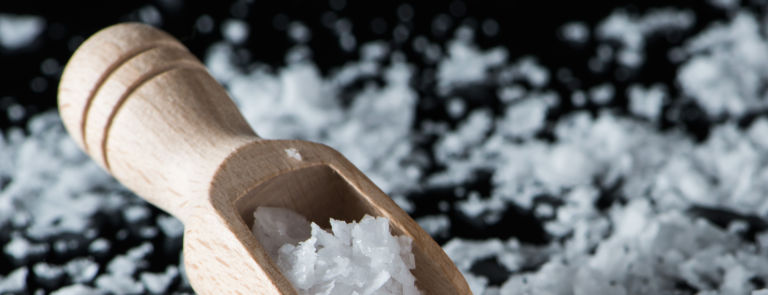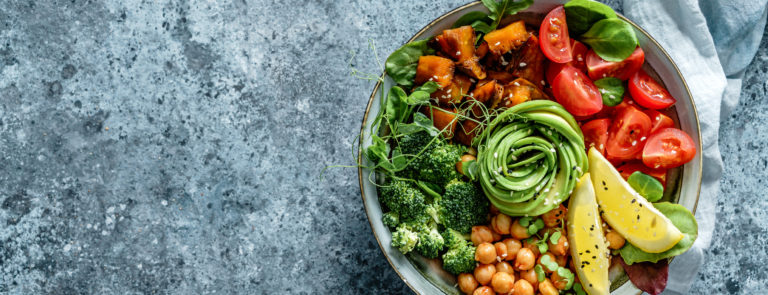15% off €25
Code:SPEND
Why sea salt?

Your ultimate guide to sea salt and its many uses, benefits and a comparison to your usual table salt. We also discover why sea salt is healthy for you.
Salt – or sodium chloride – is so crucial to life it’s been called the ‘fifth element’.1
It comes with a whole host of benefits for us humans. But why sea salt over table salt? Is there such a thing as healthy salt? And what’s up with all these gourmet salts available now?
What is sea salt?
Sea salt is what’s left over when sea water is evaporated, leaving behind salt crystals. Natural sea salt has been used since ancient times in cooking, preserving, cleaning and for personal hygiene. Today, not much has changed, with the global sea salt market growing each year. Always in demand for de-icing roads and softening water, it’s growing market could be down to the rise of gourmet salt in home cooking and the trend towards more natural health and cleaning products.2,3What’s the difference between sea salt and table salt?
Sea salt is obtained by evaporating sea water, either naturally in natural salt flats or using man-made evaporation pans. Apart from washing to remove dirt and sand, sea salt undergoes minimal processing, so trace minerals such as magnesium and potassium are left behind.4 Table salt, also known as refined salt, is usually mined from salt deposits underground which were once sea water. Table salt is processed so that the trace minerals are removed, and often anti-caking agents are added.5What’s the difference between gourmet salts and regular sea salt?
There has been a huge rise in the popularity of gourmet salts in recent years. From the pink-hued salts from the Himalayan and Atlas mountains, to oak and beech-smoked salts from Denmark, it seems every kitchen cupboard now harbours at least one ‘posh’ salt. The difference is usually either the location salt was mined in, or the treatment it has undergone afterwards to impart flavour, such as smoking over wood. The difference between Himalayan pink salt and regular table salt is that it’s mined in a specific location – the Khewra Salt Mine in Pakistan – which gives it a pink tinge.Which salt is best for you?
It’s thought that pure sea salt and high-end salts like Himalayan pink salt holds extra health benefits through a higher concentration of minerals, but this isn’t definitively proven. It’s important to know that these gourmet salts contain as much sodium as plain old table salt.6Is sea salt better for blood pressure?
Eating too much sodium may cause you to retain more fluids. Sodium can increase your blood volume, causing it to push against your veins and arteries from the inside – this is blood pressure.7 As table salt and sea salt contain the same amount of sodium, it’s not true to say that sea salt is better for high blood pressure.What are the benefits of sea salt?
Sea salt is made up of sodium chloride and tiny amounts of minerals. Table vs sea salt benefits have been debated, but it’s certainly true that we need salt. Sodium is an essential mineral. Our bodies can’t make it, so we get the small amounts we need from our diet. Sodium regulates water levels in the body, keeps electrolytes balanced.8 Unlike basic table salt, sea salt also delivers some trace minerals. These minerals are also found elsewhere in a healthy diet, though, so salt shouldn’t be a primary source. Many convenience, processed and fast foods include high amounts of sodium. A healthy diet would only include these types of foods in moderation and stick to the NHS recommendation of no more than 6g of salt a day (2.4g sodium) – that's around 1 teaspoon.9 Eating whole foods, prepared at home from fresh wherever possible and cooking with very small amounts of salt will help you to keep your sodiumintake in a normal range.What are the uses of sea salt?
1. Cooking
As any keen cook will tell you, a meal prepared without salt is usually a bland affair. Sea salt helps season food and enhances subtle flavours. Salt has a profound effect on our taste buds. It can fool us into thinking food is thicker in texture and sweeter than it is, as well as masking metallic or chemical tastes while improving overall flavour intensity.10 Some of the top uses of salt in cooking are:- Pasta - a pinch of salt in boiling water flavours pasta as it boils, meaning a well-rounded flavour. You’ll also need less salt in sauces.11,12
- Bread – salt strengthens gluten and gives bread a good structure – not to mention flavour. If you’ve ever baked bread at home leaving the salt out, you’ll know how tasteless it is.
- Vegetables – as well as adding flavour, adding salt to vegetables draws the water out, making them cook faster and giving them a better texture.
- Eggs – whether you add it before, during or after cooking (everyone’s different!), we can all agree that a little salt elevates the taste and texture of eggs.
2. Preserving
A natural preservative used for millennia, salt was key in keeping vegetables, meat, fish and dairy products edible in the time before refrigeration Salt deprives bacteria of the conditions they need to grow, meaning food is safer for longer.13 Today, most people don’t need to preserve their food using salt thanks to refrigerators. However, salted meats, salt-preserved herbs and preserved lemons, as well as olives, vegetables and fish in brine are all common in diets worldwide.3. Fermentation
Enjoying a resurgence in recent years, fermented foods are a source of healthy probiotic bacteria. Salt plays a key role in the fermentation of foods. Without salt, the lactic acid bacteria could not flourish and harmful bacteria and fungi would grow instead.14 To get started fermenting your own vegetables, you just need a lidded mason jar, salt, water and the vegetable of your choice (cabbage is a great one for beginners).4. Health and personal care
- Wound care - salt is excellent for cleaning wounds. Salt cleanses skin allowing healing to take place.
- Gargling – gargling with salt water helps soothe a sore throat. Use warm water, as this helps salt dissolve.
- Pimples - have you noticed that your skin looks clearer when you’ve been to the beach? Salt is believed to help clear up minor skin ailments such as pimples thanks to its drying properties. Try Dead Sea salt – alongside sodium chloride it boasts skin-soothing magnesium, calcium, sodium and potassium.
- Sea salt bath – soaking in a tub with a few handfuls of sea salt is thought to help relax tired muscles.
- Exfoliating scrub – salt is a natural exfoliant. Create a DIY salt body scrub using a handful of salt and a few tablespoons of coconut oil. Rub into the skin in circular motions while in the shower before rinsing off. Be careful – your shower may become slippery.



